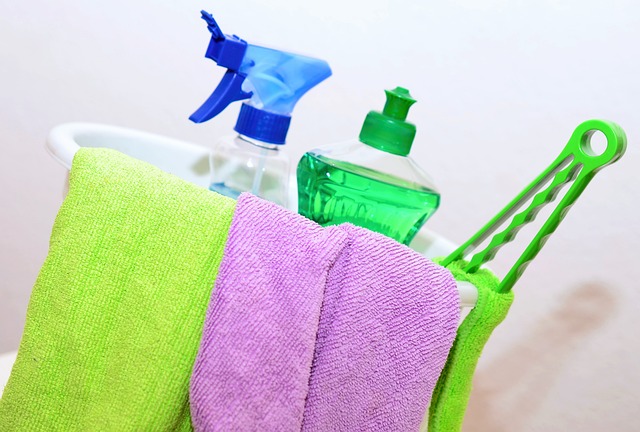Keeping a clean and organized home is essential for creating a healthy living environment. However, there are some common cleaning mistakes that many of us make without realizing it, which can not only hinder our efforts but also cause damage to our homes. Avoiding these mistakes will help you clean more efficiently, protect your household items, and save time and energy. Below, we will outline some of the most frequent cleaning blunders and provide tips on how to avoid them.
1. Using the Wrong Cleaning Products
One of the most frequent mistakes people make is using the wrong type of cleaning products for different surfaces. Not all cleaners are created equal, and using an inappropriate product can damage surfaces, furniture, or appliances. For example, using a harsh cleaner on delicate materials like wood or marble can cause irreversible damage.
How to Avoid: Always read the label on cleaning products to ensure they are appropriate for the surface you are cleaning. For natural stone surfaces like granite or marble, use pH-neutral cleaners that won’t strip the surface. For wood furniture, avoid using water-based cleaners that can cause warping. When in doubt, test a small, inconspicuous area first to make sure the cleaner is safe for use.
2. Not Allowing Cleaners Enough Dwell Time
Another common error is not allowing cleaners enough time to work. Cleaning solutions often need a few minutes to break down grime and kill bacteria effectively. Many people spray the solution and immediately start wiping it off, which doesn’t give the cleaner time to do its job.
How to Avoid: When using disinfectants or heavy-duty cleaners, allow them to sit on the surface for at least 5-10 minutes. Check the product’s instructions for recommended dwell time, which will ensure that germs and dirt are properly eliminated before you wipe them away.
3. Overloading the Washing Machine
While it may be tempting to stuff as many clothes as possible into the washing machine, this practice can lead to a number of issues. Overloading your machine can prevent clothes from being thoroughly cleaned, and it also puts unnecessary strain on the machine itself, reducing its lifespan.
How to Avoid: Stick to the manufacturer’s recommended load size for your machine. For best results, fill the machine about three-quarters full so that clothes have enough space to move around and get properly cleaned. If you need to wash a large number of items, it’s better to do multiple smaller loads.
4. Using Too Much Cleaning Solution
Many people believe that using more cleaning solution will make surfaces cleaner. In reality, using too much cleaner can leave behind a sticky residue, attracting dirt and making the surface dirty again much faster.
How to Avoid: Use the recommended amount of cleaning product as indicated on the packaging. A little goes a long way, especially for concentrated formulas. For items like floors, always dilute the cleaner as directed to avoid residue build-up.
5. Forgetting to Clean Frequently Touched Items
It’s easy to forget to clean items that are constantly touched, such as light switches, door handles, and remotes. These high-touch surfaces harbor a significant amount of germs and bacteria, which can spread illness.
How to Avoid: Make a habit of disinfecting these surfaces regularly. Use a disinfectant wipe or spray specifically designed to kill germs, especially during cold and flu season. Cleaning these items weekly is a good practice to minimize the spread of bacteria in your home.
6. Neglecting Cleaning Tools
Cleaning tools, such as sponges, mops, and vacuum filters, can become dirty quickly. Using dirty tools to clean your home can spread germs and dirt around rather than removing it.
How to Avoid: Routinely wash or replace your cleaning tools. Sponges should be replaced every one to two weeks and disinfected regularly. Mop heads should be washed after each use, and vacuum filters should be cleaned or replaced based on the manufacturer’s instructions.
7. Not Ventilating the Room During and After Cleaning
Many cleaning products contain chemicals that can release harmful fumes into the air. Without proper ventilation, these fumes can build up, leading to poor indoor air quality and potential health problems.
How to Avoid: Always open windows or turn on a fan when cleaning, especially when using chemical-based products like bleach or ammonia. Proper ventilation helps dissipate fumes and keeps the air in your home fresh and clean. If weather permits, leave windows open for a while after cleaning to allow for better airflow.
8. Using a Dirty Dishwasher
A dirty dishwasher can lead to less-than-sparkling dishes, as food residue and soap scum build up over time. Many people forget that the dishwasher itself needs to be cleaned regularly to maintain its efficiency.
How to Avoid: Clean your dishwasher once a month by running it empty with a dishwasher-safe cleaning solution or a cup of white vinegar placed on the top rack. Also, regularly clean the filter to prevent food particles from accumulating.
9. Scrubbing Stains Instead of Blotting
When a spill occurs, the instinct is often to scrub it away as quickly as possible. However, scrubbing can push the stain deeper into the fabric or carpet, making it harder to remove.
How to Avoid: Blot stains gently with a clean cloth or paper towel to soak up as much of the liquid as possible. For more stubborn stains, use a stain remover and continue blotting. Avoid rubbing, as this can damage the fibers and worsen the stain.
10. Ignoring Curtains and Upholstery
Curtains and upholstery are often overlooked during regular cleaning routines. Dust, allergens, and pet hair can accumulate in these fabrics, contributing to poor indoor air quality.
How to Avoid: Vacuum curtains and upholstered furniture regularly, or use a handheld vacuum attachment for fabric surfaces. Every few months, deep-clean with a fabric-safe cleaner or steam clean to remove embedded dirt and allergens.
11. Skipping a Cleaning Schedule
Many people wait until their home looks dirty to start cleaning, which often leads to more extensive and time-consuming tasks. Without a consistent cleaning schedule, dirt and grime can build up, making the cleaning process more difficult in the long run.
How to Avoid: Create a cleaning schedule that divides tasks into daily, weekly, and monthly routines. For example, vacuuming and wiping down kitchen counters can be done daily, while tasks like cleaning the oven or deep-cleaning bathrooms can be scheduled monthly. Having a regular routine will make cleaning more manageable and less overwhelming.
12. Forgetting to Clean Behind Large Appliances
It’s easy to ignore the spaces behind large appliances like refrigerators, ovens, and washing machines. Over time, dust and grime can accumulate in these areas, which can attract pests or affect the performance of your appliances.
How to Avoid: Make it a point to clean behind these appliances at least once every few months. Carefully move the appliance, vacuum the area, and wipe down any surfaces. This will prevent dust build-up and help maintain the efficiency of your appliances.
By recognizing and avoiding these common cleaning mistakes, you’ll ensure your home stays cleaner, healthier, and more organized. Implementing the right techniques and habits will also help preserve the longevity of your household items and make your cleaning routine more effective.



